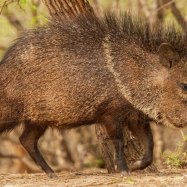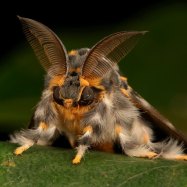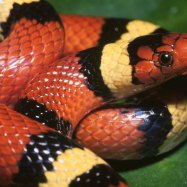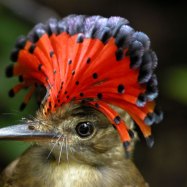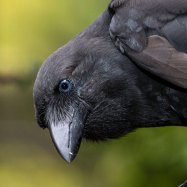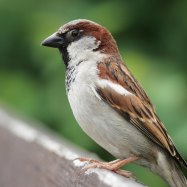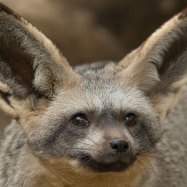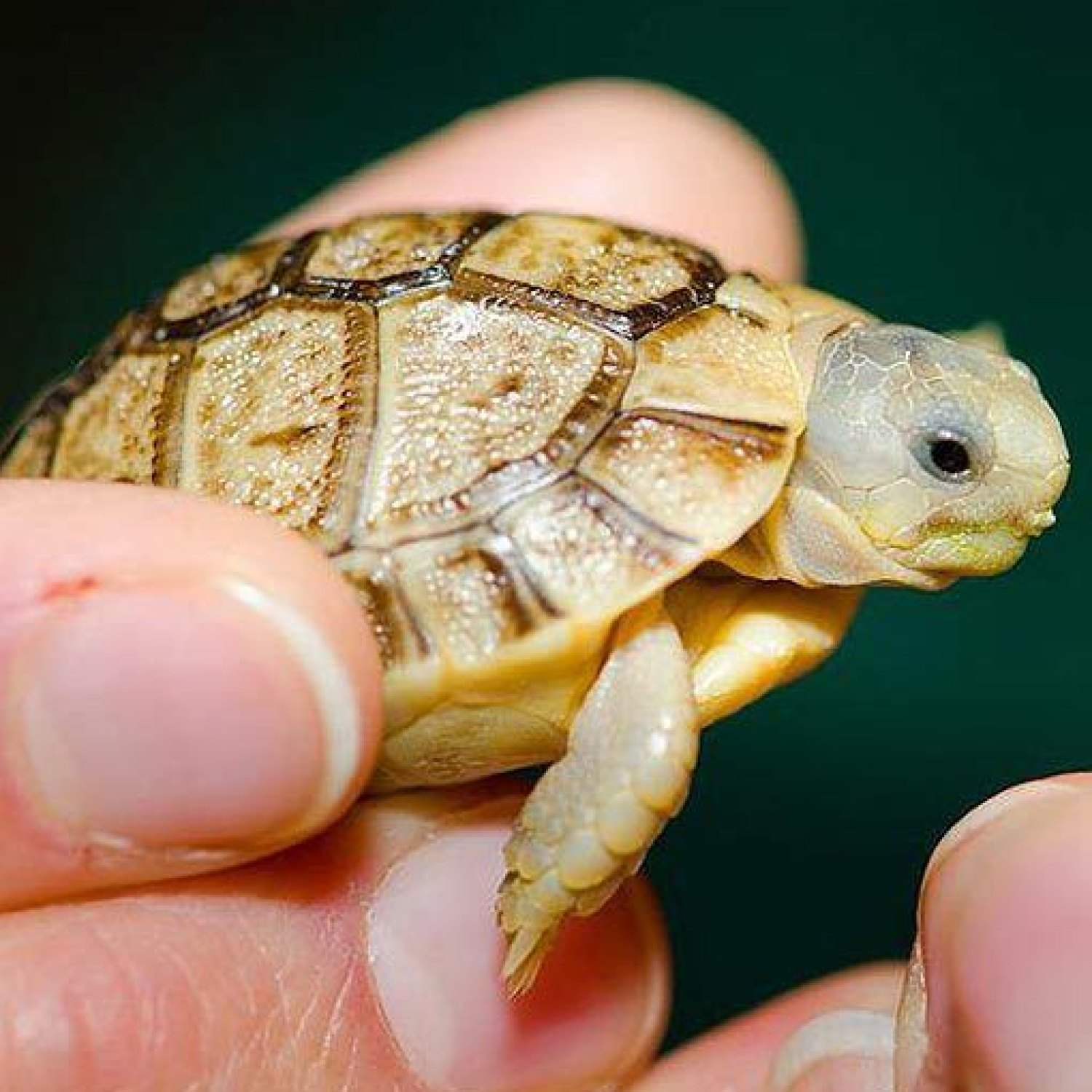
Egyptian Tortoise
Around 14 cm (5.5 inches)
The Egyptian Tortoise, found in North Africa, is a small but mighty creature with a dome-shaped carapace, round head, and sturdy limbs. Measuring around 14 cm in length, it belongs to the Testudinidae family and is popular among reptile enthusiasts. This docile and low-maintenance pet is well-suited for first-time turtle owners, but be sure to provide them with a diet of plants and a warm habitat to thrive.
Animal Details Summary:
Common Name: Egyptian Tortoise
Kingdom: Animalia
Habitat: Desert and semi-desert regions
The Fascinating World of the Egyptian Tortoise
Deserts are known for their harsh and extreme conditions, making it difficult for any form of life to survive. However, the Egyptian Tortoise, also known as Testudo kleinmanni, defies all odds with its ability to thrive in such a harsh environment. These small but resilient creatures have captured the hearts of many, and it's no surprise why! With their unique characteristics and fascinating behavior, the Egyptian Tortoise is truly a remarkable species that deserves to be celebrated.Let's dive into the world of the Egyptian Tortoise and discover what makes them so special Egyptian Tortoise.
The Kingdom of the Egyptian Tortoise
Before we delve into the world of the Egyptian Tortoise, let's first understand its place in the animal kingdom. The scientific classification of this species is as follows:- Kingdom: Animalia
- Phylum: Chordata
- Class: Reptilia
- Order: Testudines
- Family: Testudinidae
These classifications tell us that the Egyptian Tortoise belongs to the animal kingdom, is a chordate (meaning it has a spinal cord), and is a member of the reptile class. Within the reptile class, it belongs to the order Testudines, which includes all species of turtles, and specifically to the Testudinidae family, which includes all tortoise species.
It's fascinating to note that the Egyptian Tortoise shares its family with some of the largest tortoises in the world, such as the Galapagos Tortoise and the Aldabra Tortoise. Surprisingly, the Egyptian Tortoise is the smallest and lightest species of tortoise within its family, with an average length of only 14 cm (5.5 inches) and a weight of 150-300 grams. Despite its small size, this species has left a big impact on its native land of Egypt.
The Habitat of the Egyptian Tortoise
As the name suggests, the Egyptian Tortoise is native to the country of Egypt, but it can also be found in parts of Libya and Israel. These regions are typically characterized by their desert and semi-desert climates, which means the Egyptian Tortoise has adapted to survive in these harsh conditions Emerald Tree Boa.These tortoises are primarily found in sandy and rocky areas, where they can dig burrows to escape the intense heat of the desert. They are also known to live in close proximity to human settlements, as they often feast on the plants and crops grown in these areas.
However, the Egyptian Tortoise's habitat is under threat due to human activities such as overgrazing and development, leading to a decline in their population. As a result, they are now considered a critically endangered species by the International Union for Conservation of Nature (IUCN).
The Feeding Habits of the Egyptian Tortoise
The Egyptian Tortoise is primarily herbivorous, meaning that it feeds on plants and vegetation. In the wild, they are known to graze on succulent plants, such as cacti, shrubs, and grasses. However, they also enjoy feasting on fruits, flowers, and even the occasional insect.Their sturdy beaks allow them to easily break down tough plants, and their strong jaws help them chew on prickly cactus plants without getting hurt. Interestingly, these tortoises have a unique adaptation where they can store any excess water they consume in their bladder to survive the arid conditions of the desert.
In captivity, Egyptian Tortoises are often fed a diet of dark leafy greens, such as kale and collard greens, along with vegetables and fruits. It's crucial to ensure that they have access to clean water at all times, as dehydration can be fatal for this species.
The Unique Appearance of the Egyptian Tortoise
The Egyptian Tortoise has a distinct appearance that sets it apart from other tortoise species. Their carapace, or top shell, is dome-shaped and has a brown to yellowish-brown coloration. This helps them blend in with their surroundings in the desert.They also have a round head and a sturdy body, with short and sturdy limbs that are used for crawling and burrowing. One of the defining features of the Egyptian Tortoise is its beautiful star-patterned plastron, or bottom shell. These patterns are unique to each individual, making it easier for researchers to identify and track them in the wild.
The Story of the Egyptian Tortoise
The Egyptian Tortoise is not just a fascinating species in terms of its appearance and adaptation, but it also has a rich cultural and historical significance. This species has been a part of Egyptian culture and mythology for centuries, with stories and artwork depicting them as symbols of longevity and good fortune.They were also highly valued and often kept as pets by ancient Egyptians and were even mummified alongside their owners in tombs. However, their popularity led to overexploitation and a decline in their population.
Today, the Egyptian Tortoise faces various challenges, from loss of habitat to a decline in their natural prey due to human interference. Efforts are being made by conservation organizations to protect and restore their habitat, and captive breeding programs have been launched to help increase their numbers in the wild.
The Future of the Egyptian Tortoise
The Egyptian Tortoise's future is uncertain, but there is still hope for this species. As mentioned earlier, conservation efforts are underway to protect and preserve their habitat, and captive breeding programs are also being implemented.Moreover, educational initiatives are helping raise awareness about the importance of preserving this species and their habitat. By educating the public about the Egyptian Tortoise's ecological role and cultural significance, we can work towards securing a better future for these magnificent creatures.
The Rising Need for Conservation Efforts
The Egyptian Tortoise's story is a reminder of the harsh reality that thousands of other species face every day. With habitat destruction, overexploitation, and climate change, many species are on the verge of extinction.The Egyptian Tortoise is just one example of how human activities can lead to the decline of a species. It's crucial for us to take action and work towards preserving and protecting the natural world and its inhabitants. We must remember that we share this planet with millions of other species, and it's our responsibility to ensure their survival and coexistence.
The Role of Technology in Conserving Wildlife
In today's digital age, technology has proven to be a powerful tool in conserving wildlife and their habitats. Through Natural Language Processing (NLP) techniques and artificial intelligence, scientists and conservationists can analyze data and monitor species to track their population and any changes in their behavior.Moreover, technology has made it easier to educate the public about conservation efforts and raise awareness about the importance of preserving our natural world. Social media and other digital platforms allow us to reach a broader audience and encourage them to take action towards protecting our planet's biodiversity.
Conclusion
In conclusion, the Egyptian Tortoise is a fascinating and resilient species that has captured the hearts of many. From their unique adaptation to their rich cultural significance, these tortoises are truly remarkable creatures. However, they face numerous challenges and are currently considered a critically endangered species, making it crucial for us to take action towards their conservation.Through education, awareness, and technological advancements, we can work towards securing a better future for the Egyptian Tortoise and other endangered species. Let's join forces and work towards preserving our planet and its precious biodiversity, one species at a time.

Egyptian Tortoise
Animal Details Egyptian Tortoise - Scientific Name: Testudo kleinmanni
- Category: Animals E
- Scientific Name: Testudo kleinmanni
- Common Name: Egyptian Tortoise
- Kingdom: Animalia
- Phylum: Chordata
- Class: Reptilia
- Order: Testudines
- Family: Testudinidae
- Habitat: Desert and semi-desert regions
- Feeding Method: Herbivorous
- Geographical Distribution: Egypt, Libya, and Israel
- Country of Origin: Egypt
- Location: North Africa
- Animal Coloration: Brown to yellowish-brown
- Body Shape: Dome-shaped carapace, round head, and sturdy limbs
- Length: Around 14 cm (5.5 inches)
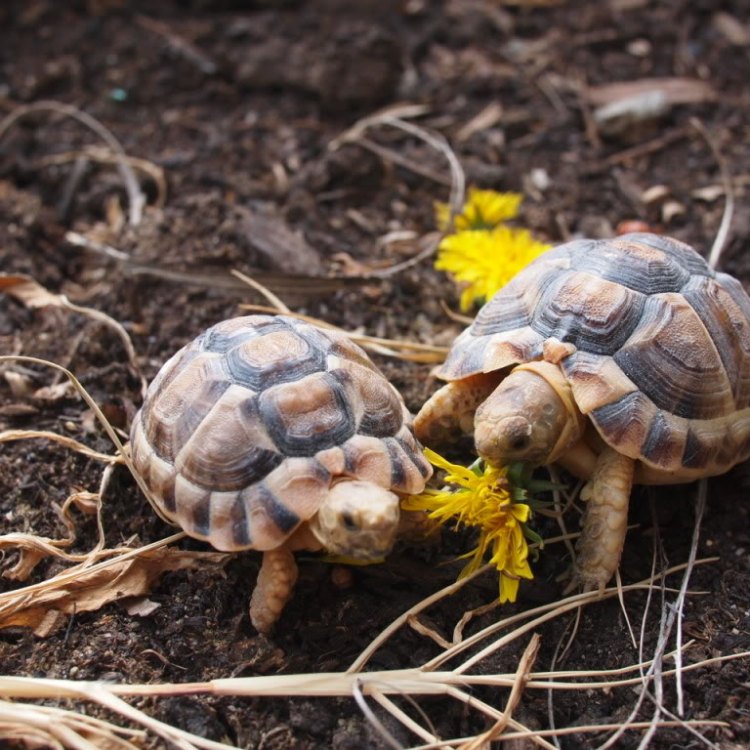
Egyptian Tortoise
- Adult Size: 9 to 15 cm (3.5 to 6 inches)
- Average Lifespan: Up to 50 years
- Reproduction: Sexual
- Reproductive Behavior: Mating occurs in spring
- Sound or Call: Males make low-pitched groans during mating
- Migration Pattern: Non-migratory
- Social Groups: Solitary
- Behavior: Diurnal and burrows in the ground to escape extreme temperatures
- Threats: Habitat loss, collection for pet trade, and poaching
- Conservation Status: Critically Endangered
- Impact on Ecosystem: Seed dispersal and vegetation control
- Human Use: Collected for the pet trade
- Distinctive Features: Domed shell with a high central bulge, yellowish-brown coloration
- Interesting Facts: It is one of the smallest tortoise species in the world
- Predator: Birds of prey, foxes, and wildcats
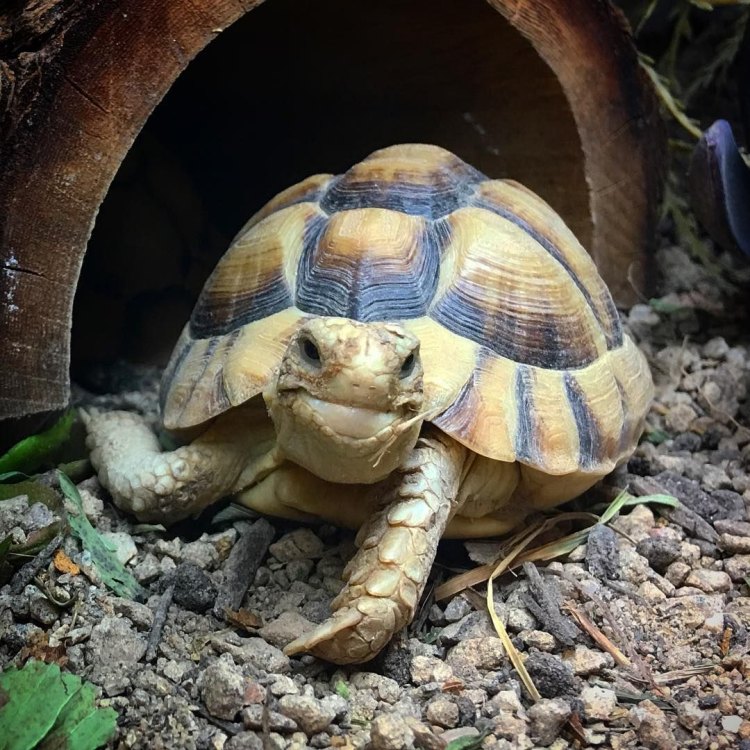
Testudo kleinmanni
Egyptian Tortoise: The Endangered Tiny Treasure of the Desert
Deep in the hot and arid deserts of Egypt, there exists a species of tortoise like no other. It is small in size but mighty in its ability to survive in harsh conditions. Meet the Egyptian Tortoise (Testudo Kleinmanni), one of the smallest tortoise species in the world, and a true treasure of the desert.From its distinctive appearance to its unique behavior and ecological role, the Egyptian Tortoise is truly a remarkable creature that deserves our attention and protection PeaceOfAnimals.Com. In this article, we will delve into the fascinating world of this critically endangered species and learn about its distinctive features, behavior, threats, and the impact it has on its ecosystem.
But first, let's get acquainted with our tiny protagonist.
A Mighty Tortoise in a Tiny Package
The Egyptian Tortoise is a species of land tortoise that belongs to the Testudinidae family. It is native to the northern and eastern regions of Egypt, as well as a few areas in Libya and Israel. It is also known as the Kleinmann's Tortoise or the Leith's Tortoise, named after two renowned herpetologists who first described the species in the 1930s.This tortoise has a domed shell with a high central bulge and can reach a maximum size of 15 cm (6 inches) in length. However, the average size of an adult Egyptian Tortoise is between 9 to 15 cm (3.5 to 6 inches), making it one of the tiniest tortoise species in the world. Its shell is characterized by intricate yellowish-brown patterns and it has four stumpy legs with sharp claws for digging and defense English Setter.
While the Egyptian Tortoise may seem small and fragile, it has some impressive abilities that have allowed it to adapt and thrive in its harsh desert environment.
A Survivor against All Odds
Living in the harsh and unforgiving desert environment, the Egyptian Tortoise has developed extraordinary survival tactics. One of its distinctive behaviors is its ability to burrow in the ground to escape extreme temperatures. When the scorching desert sun becomes too intense, the tortoise will dig into the ground using its strong claws to create a shaded and cooler space.Additionally, this tortoise is also a master of conserving water. It has a highly efficient digestive system that allows it to extract all the moisture it needs from the plants it eats. This means that it can go for long periods without drinking water, a crucial skill for survival in the desert.
But despite its incredible abilities, the Egyptian Tortoise is facing several threats that have pushed it to the brink of extinction.
The Endangered Treasure of the Desert
The Egyptian Tortoise is currently listed as Critically Endangered on the IUCN Red List, which is the highest threat category for a species. There are several factors that have contributed to its decline, including habitat loss, collection for the pet trade, and poaching.The rapid expansion of human settlements in its natural habitat has resulted in the destruction and fragmentation of its already scarce desert habitat. This has led to a decrease in the availability of food and shelter for the tortoise, making it difficult for it to survive. In addition, the increasing use of pesticides and herbicides has also affected the quality of the plants that the tortoise relies on for food.
Another major threat to the Egyptian Tortoise is its high demand in the pet trade. Due to its small size and unique appearance, it has become a highly coveted species in the illegal pet trade industry. The trade of this tortoise is illegal, but unfortunately, it still occurs due to its high value in the black market.
Moreover, poaching is another major issue affecting the survival of this species. The Egyptian Tortoise is considered a delicacy in some cultures, and its meat is highly valued for traditional medicine. This demand has resulted in the illegal hunting and killing of these beautiful creatures.
If these threats continue, the Egyptian Tortoise could soon disappear from its natural habitat, resulting in a significant loss for both the species and its ecosystem.
A Vital Role in the Ecosystem
Apart from being a unique and fascinating species, the Egyptian Tortoise also plays a crucial role in its ecosystem. As a seed disperser, it helps to maintain the diversity and balance of vegetation in the desert. The tortoise ingests seeds from various plants and then deposits them in new locations, aiding in the dispersal of plant species and promoting their growth in different areas.Furthermore, the Egyptian Tortoise also helps to control vegetation in its habitat. As an herbivore, it feeds on a variety of desert plants, preventing any one species from becoming dominant and maintaining a diverse desert ecosystem.
Therefore, the loss of the Egyptian Tortoise could have a significant impact on the flora of the desert, affecting not only the tortoise but also the other species that rely on these plants for their survival.
The Human Impact and Conservation Efforts
The Egyptian Tortoise has played a significant role in human culture for centuries. In ancient Egypt, it was revered and considered a symbol of longevity and resilience. However, in modern times, human activities have become one of the main threats to its survival.But it's not too late to save this tiny treasure of the desert. Numerous conservation efforts are underway to protect and preserve the species. These include habitat restoration, strict regulations on the pet trade, and measures to reduce poaching.
In addition, there are also efforts to increase public awareness about the importance of these tortoises and their conservation. In 2016, a successful breeding program was established in Egypt to increase the numbers of Egyptian Tortoises in captivity. This program has seen positive results, with over 500 tortoises being bred and released back into the wild.
The Egyptian Tortoise: A Species Worth Protecting
In the midst of deserts and the chaos of human activities, the Egyptian Tortoise stands out as a small but mighty creature that fascinates and captivates us. From its unique appearance and behavior to its vital role in the desert ecosystem, it is a species that deserves all efforts to protect and preserve it.As we strive to save our planet's endangered species, let us not forget the tiny treasures of the desert, like the Egyptian Tortoise, who have an important part to play in keeping our world diverse and balanced. By raising awareness about these remarkable creatures and taking actions to protect their habitats, we can ensure a brighter future for these tiny creatures and for our planet as a whole.
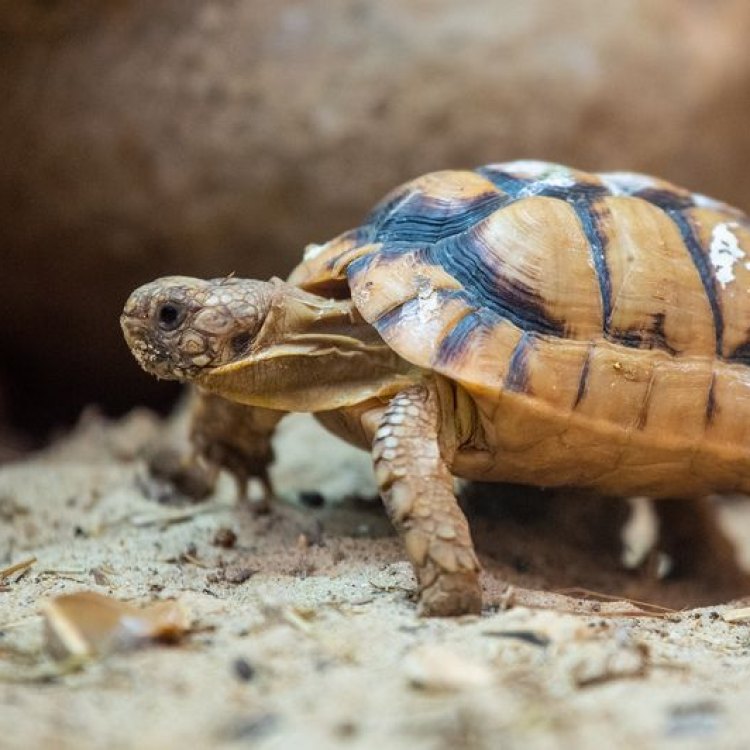
The Fascinating World of the Egyptian Tortoise
Disclaimer: The content provided is for informational purposes only. We cannot guarantee the accuracy of the information on this page 100%. All information provided here may change without prior notice.

